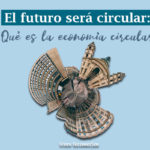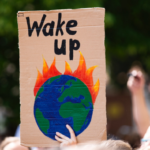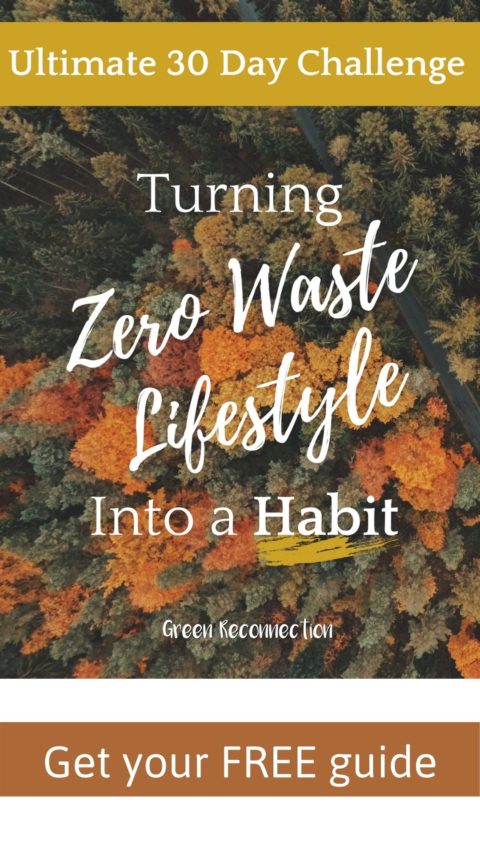In September 20th 2019, a huge world wide strike was organized in order to demand governments to take action against the climate crisis. More than 4 million people from 163 countries took the streets. According to the newspaper El País, there were 65 strikes in Mexico, becoming the leading country in Latin America.
The strikes of Fridays For the Future are mainly characterized gathering young people since they “seem to be the ones to be more aware of” the climate crisis problematic. However, only about 1,000 people attended the strike in Mexico City.
Table of Contents
Could the lack of participation be a reflection of the lack of interest in the climate crisis?
I wrote this report in September 2019, and the results made me realize how important it is to speak up and fight for our planet. Climate crisis is also about social justice, so this effort is for us and for the environment.
I can’t understand why it seems people don’t care about the climate crisis, or do they? That is why I decided to investigate the cause of this, by focusing my methodology on my classmates who share the same characteristics as other young people around the world who are or are not interested in the climate crisis.
This is not a normal blog post, this is a research report I wrote last year. However, this investigation can help understand what people are thinking, why is it that not everyone is helping, and most importantly, what we can DO about it. The results will open your mind to new insights and possibilities that you can use in your daily life.
To answer this, I made a poll of 100 college students and it was concluded that 69.6% of the students are interested in reading about climate change but 30.4% showed little or no interest in the subject.

Older generations expect that millennials and centennials will be the saviors of the world. Nevertheless, it shows that not everyone is interested in doing so. There are many causes that explain the detachment which can be analyzed from three different perspectives: Sustainability sciences, psychology and communication.
Stages leading to chaos
According to the scientific article The Emergency of Climate Change: Why Are We Failing to Take Action published by Cynthia Frantz and Stephan Mayer, we go through 5 stages before we decide to take action in climate change.
The first stage describes how we are not capable of noticing the event. From our disconnection with nature, such as staying in closed working areas or recreational spaces, to imperceptibles causes such as the increase of the CO2, they lead people to not see what is happening.
In other words, understanding the climate crisis in our daily life requires observation and analysis: “We don’t think about how the ecosystems are changing and consequently where will we live, what quality of food we will have and the increase in diseases,” states Cristina Ayala, the first Ph Doctor in Sustainability Science in Mexico.
The beginning of the climate crisis fight
After identifying the events, the odyssey is just beginning. It is necessary to interpret them as emergencies and for that we require the support of our emotions.
The survey shows that when reading a news item about climate change people feel…
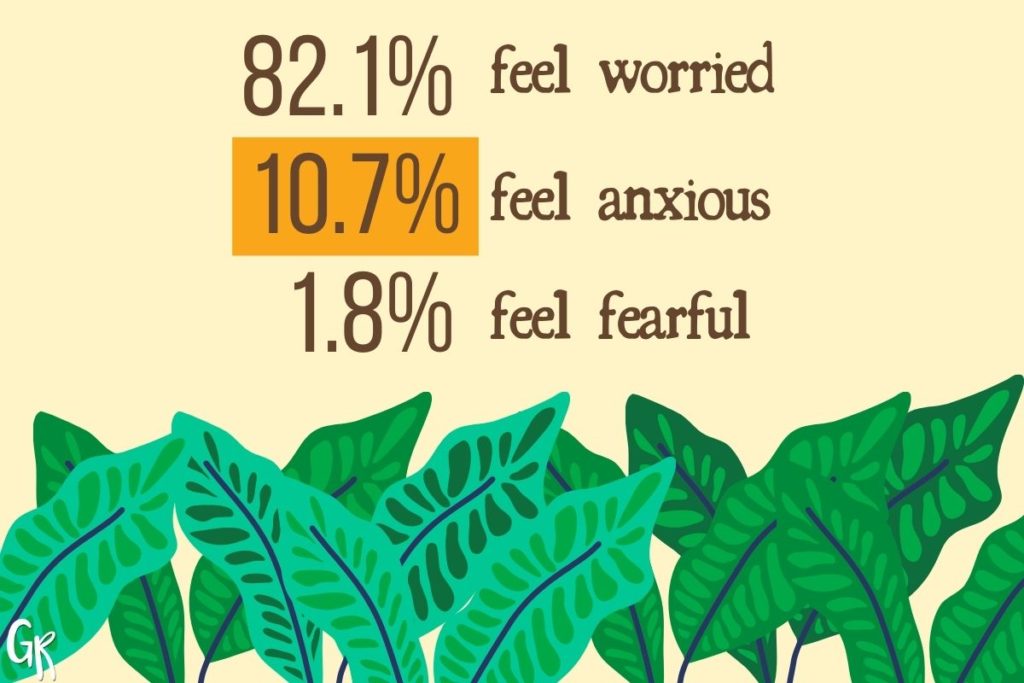
Luis García Barrón, Political and Social Psychologist, explains that: “When we are feeling fearful it is because there is an identifiable danger. On the contrary, feeling anxious means that the threat has not been identified.
Thus, as a defense mechanism there is a tendency to eliminate, block, minimize or not listen to the information.” We do not know when or how such catastrophes will affect our daily lives, causing us anxiety, so as a defense mechanism we become disinterested in the issue.
In this stage, we feel we are responsible to help. However, this stage is clouded by the psychological barrier known as cognitive dissonance, which means that we show inconsistency between our beliefs and behavior.
Thoughts such as…
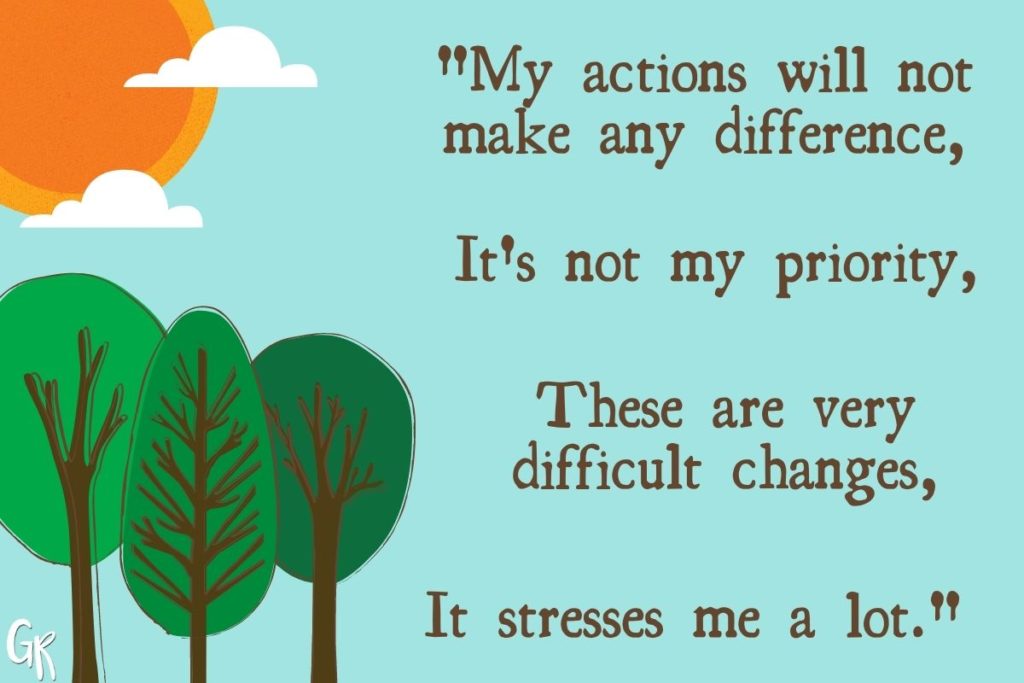
…add up to 44.7% of the responses to the question as to why they have not been encouraged to take more action.
Consequently, psychologist Luis Alberto García explains that: “We convince ourselves that we cannot do something or that our action is irrelevant.” While the survey indicates that 80.4% of students believe that they can do much more to help, 19.6% think that they already do everything they can.
The comfort zone
A list with the most common individual actions that contribute to caring for the environment was included in the survey. It shows that the activities that need more sacrifice and the ones that require to get out of one’s comfort zone are the least implemented.
The activities with the greatest participation are:
- Refusing to use straws
- Turning the lights off when not in use
- Refusing disposables.
On the other hand, the activities with the lowest participation are:
- Consumption of local or bulk products.
- Decrease in the consumption of meat.
- Clothing.
- Electronic devices such as cell phones.
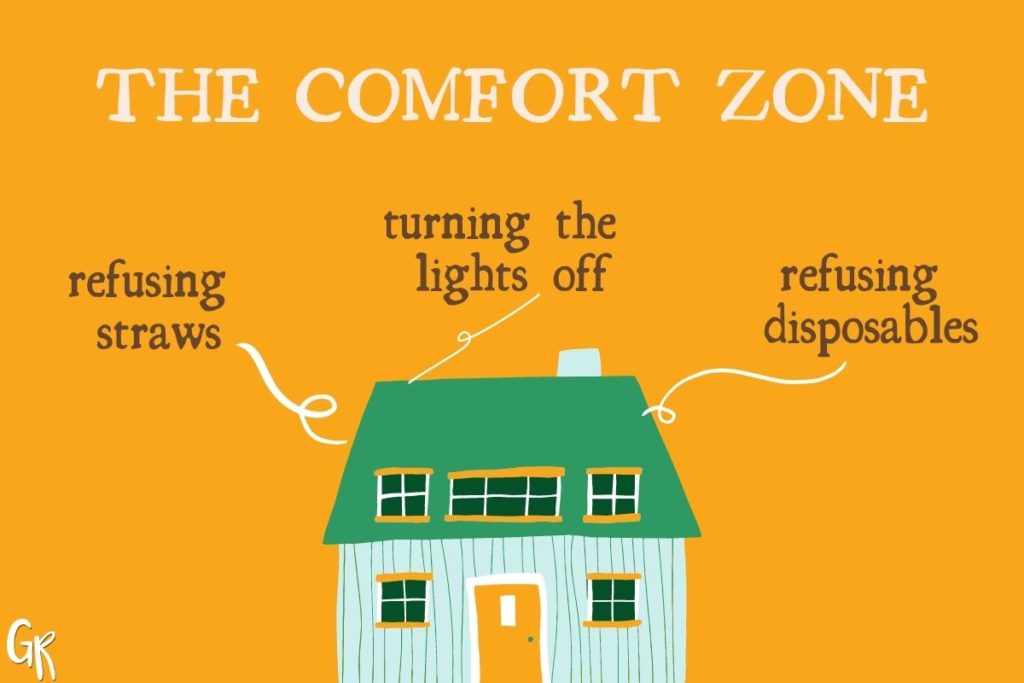
Cristina Ayala explains that while there are industries such as the energy industry where it is more complex to get involved as a consumer, there are others, such as the fashion industry, where we can take responsibility and change. It is crucial to mention that the fashion industry is between the second and fifth most polluting industry in the world: “The industry has more than 30 seasons a year and more than 40% of the garments that come out annually are incinerated due to this high change in temporality. We are completely responsible for this level of consumption,” she says.
Getting lost in the way
Last March 2019 a wave of calls to action circulated in Mexico City because people were concerned about the alarming environmental contingency that clouded the city for days.
These were very optimistic but scientifically unfounded initiatives. That was what inspired Cristina Ayala to make an explanatory video for her family and friends which gradually became viral: “People began to call me and ask me what they could do instead. I realized that there were many good intentions but what was missing was scientific information,” she says.
The survey indicates that 53.6% of students have not been encouraged to do something else because they are not sure how to start. The high response of people who want to participate, shows that what can be initially understood as disinterest could mean that what the problem is in reality is the lack of knowledge of effective alternatives.
This brings us to the fourth stage of the model, which consists in needing to know what to do and deciding to act. If you don’t know which direction to take, it is highly possible that these motivated people will get lost along the way.
The news generally provides hard data and does not suggest solutions and alternatives. It should be mentioned that the media become fundamental actors due to the way in which they transmit the news; they can make a person be interested or not in the last stage of the cognitive process.
Jimena Sabanés, a communicator who works in the commercial area of Discovery Networks, explains that: “If we are bombarded with data or statistics to which we cannot find practical sense, it is more difficult for us to do something with that information.” Jimena proposes telling stories and changing narratives are the solutions for the media effects to inspire people.
Salvation vs Solution
We are used to seeing two types of movies: some show an apocalypse that brings humanity to a tragic end, and others teach us that our lives will be radically improved because of technology. The truth is that neither of the two narratives is completely correct.
First, just as the UN established that the year 2050 could be the end of humanity, it is important to take into considerations that this will not happen overnight. The consequences are gradual: “Climate change is a train set in motion and we need to buy time. We will reach critical points where the consequences will be very serious and the effects will be stronger, faster and more devastating,” explains Cristina Ayala.
Secondly, technology should not be seen as the savior of humanity: “It can be a tool that helps mitigation and compensation strategies but we must change habits, make legislation that truly protects ecosystems, and have a paradigm shift that allows human and species survival,” Cristina Ayala declares.
Does young generations have all the responsibility?
The specialist Luis García tells that one day after school, his 11-year-old daughter was very optimistic and decided to start collecting all the plastic bottles that they consume at home. Every weekend she wanted to go to the machines located in the parks to recycle them.
Young people have been singled out as the possible saviors of the planet. García explains that this goes beyond generational concern and that those who will experience the consequences will be them. Nevertheless, it is also due to the fact that it is easier for children and adolescents to generate new habits if they are educated based on them: “It has been shown that changing a person with deeply rooted mental and behavioral habits is complex, especially when the changes have to do with their identity. You don’t want to give up something that has value for you and that is part of your tradition,” explains Luis García.
This is the last stage of the model, analyzing the balance between costs and benefits if you decide to act. The change will be completed once all of these barriers are broken after understanding the benefits of a sustainable lifestyle.
Climate change’s anonymous heroes
It may seem that there is a long way ahead of those who haven’t chosen a sustainable lifestyle. But on the bright side, let’s focus on the millions of people who have already broken these five barriers and have started to make a difference. Why? Because I believe that one of the most powerful tools in fighting the climate crisis is inspiration. I was inspired to be more eco friendly and I bet you were too.
Of course it is crucial to be aware of the negative impacts of the crisis, however, focusing on positive innovations, advances and a better quality life for everyone gives us all hope. We are trying to make things better because we have hope that someday we can have a balanced life for humanity and the planet.
Our disconnection with the world has led us to these difficulties. Nevertheless, as the study suggests, many people already want to help but they just don’t know how. That is why I started this blog, to help people find their way into sustainable living and to build a supportive community where we can learn from each other.
I have met extraordinary people who are trying to inspire more people to overcome these barriers from friends who just decided to ride their bike to college, to people that are dedicating their life to sustainable investigation.
In conclusion, one of the most common thoughts is that it is impossible to be 100% eco friendly. In response, in July 2019 a campaign called “Imperfect Environmentalists” was created in order to show that we can all make mistakes and that it is never too late to try to improve. Cristina Ayala explains that it is indeed impossible to be completely sustainable, but each action does make a crucial difference. Cristina writes on her Instagram:
“We don’t need a perfect environmentalist, we need millions of imperfect environmentalists taking action every day.”



